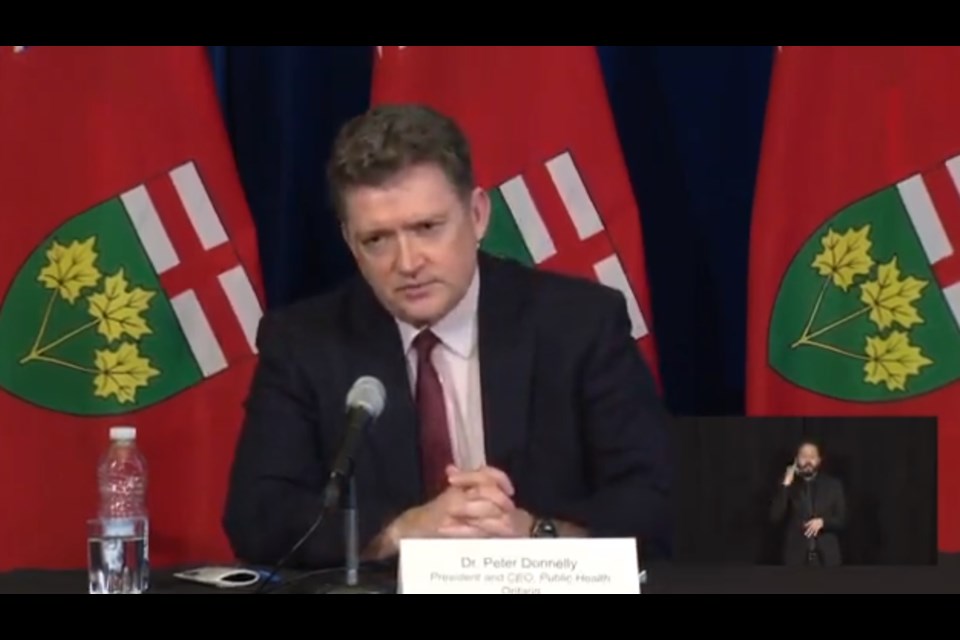The message from some of Ontario's top health officials was clear on Friday: Ontarians need to continue practicing social distancing and taking all necessary precautions to fight the spread of COVID-19.
Dr. Peter Donnelly, president and CEO of Public Health Ontario, and Adalsteinn (Steini) Brown, dean of the Dalla Lana School of Public Health at the University of Toronto laid out how grim the situation could have been had the province not taken measures such as shutting down schools and non-essential businesses, and how serious the situation remains.
Donnelly explained that Ontario is following a similar trajectory to the rest of Canada and the United States in terms of the numbers of cases, while stating that much has already been done to limit the eventual death toll that the virus will leave in its wake when all is said and done.
Brown laid out some of the numbers, indicating that had no measures been taken in Ontario, the province would be looking at roughly 6,000 deaths in the month of April alone. Current measures that have been put in place could still see 1,600 deaths by the end of the month, but "strong action" could bring that number down to 250 deaths.
In terms of timeline when it comes to the lifespan of the virus, Donnelly says that it could be 18 months or up to two years before all is said and done, due to the propensity for secondary and tertiary waves to hit.
Had no measures been taken, Ontario would have likely been looking at a death toll close to 100,000 over the entire lifespan of the virus. If Ontarians continue to exercise proper social distancing, hand washing, and other precautionary measures, Donnelly says that number will be more in the range of 3,000 to 15,000.
"It depends on all of us," said Donnelly.
Ontario's backlog of COVID-19 testing has been eliminated through long hours and hard work, he said, and now officials can more strategically apply tests. In this, long-term care homes will be a priority since, as was shown at the Pinecrest Nursing Home in Bobcaygeon, once COVID gets into a nursing home, it can quickly wreak havoc.
He said the number and type of essential services will be reviewed and potentially reduced and physical distancing measures will be enhanced.
President and CEO of Ontario Health Matt Anderson spoke to what is being done to ensure that Ontario's hospitals have the capacity to handle a surge, if and when it happens. Anderson explained that Ontario Health is doing everything they can to move their surge capacity up, but if Ontarians don't adhere to the advice of the experts, hospitals will be pushed past their capacity.
He said Ontario needs to increase the number of new available ICU beds by 900 quckly to manage the coming surge of COVID-19 cases.
"That's the best-case scenario," Anderson said.
He said a "small army" is being assembled for aggressive contract tracing of infections, which has been shown in other jurisdictions to be highly effective at slowing the spread of the virus.
Ontario Premier Doug Ford is expected to hold his daily COVID-19 briefing today at 2 p.m.
Sudbury.com will carry the livestream of today's briefing on our site.
